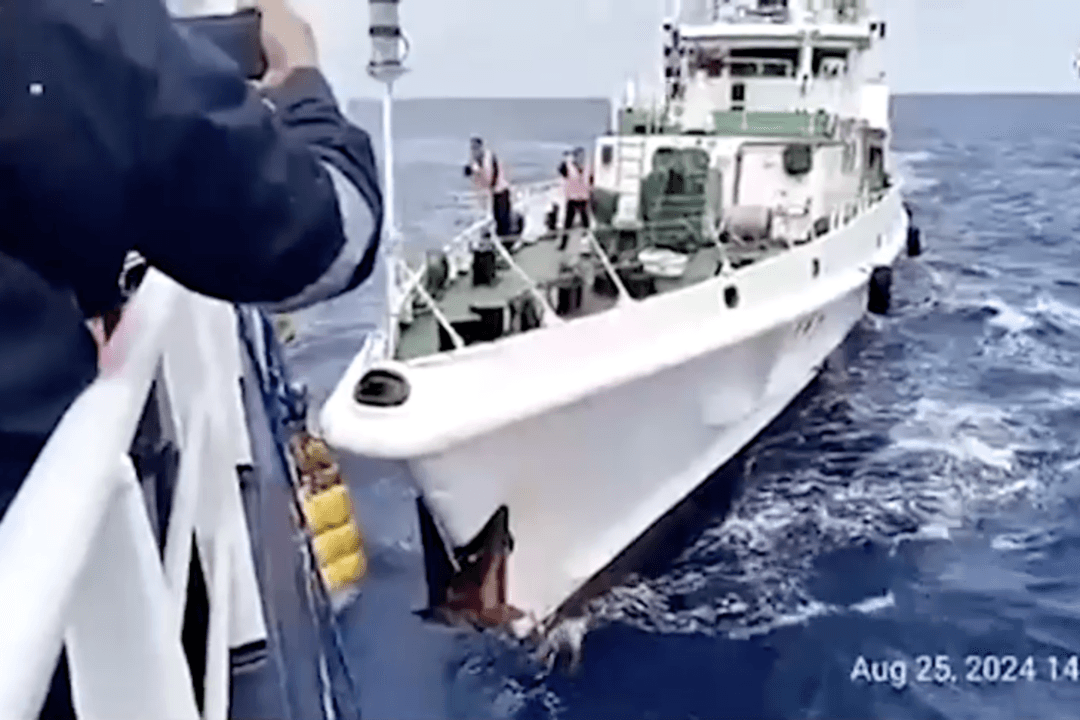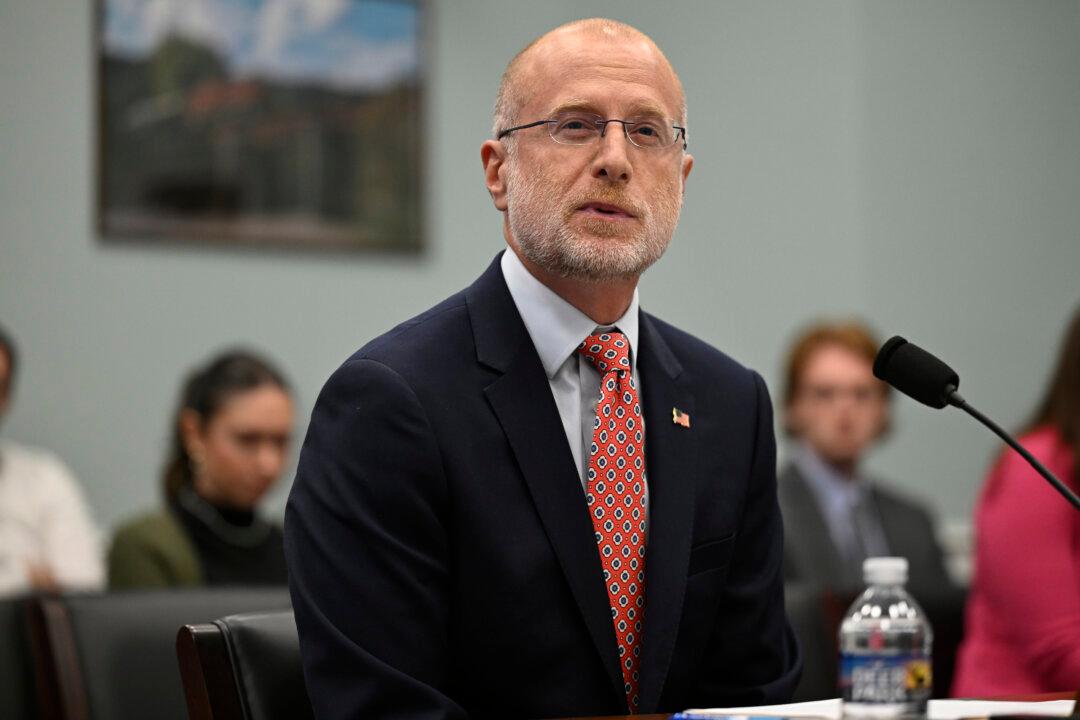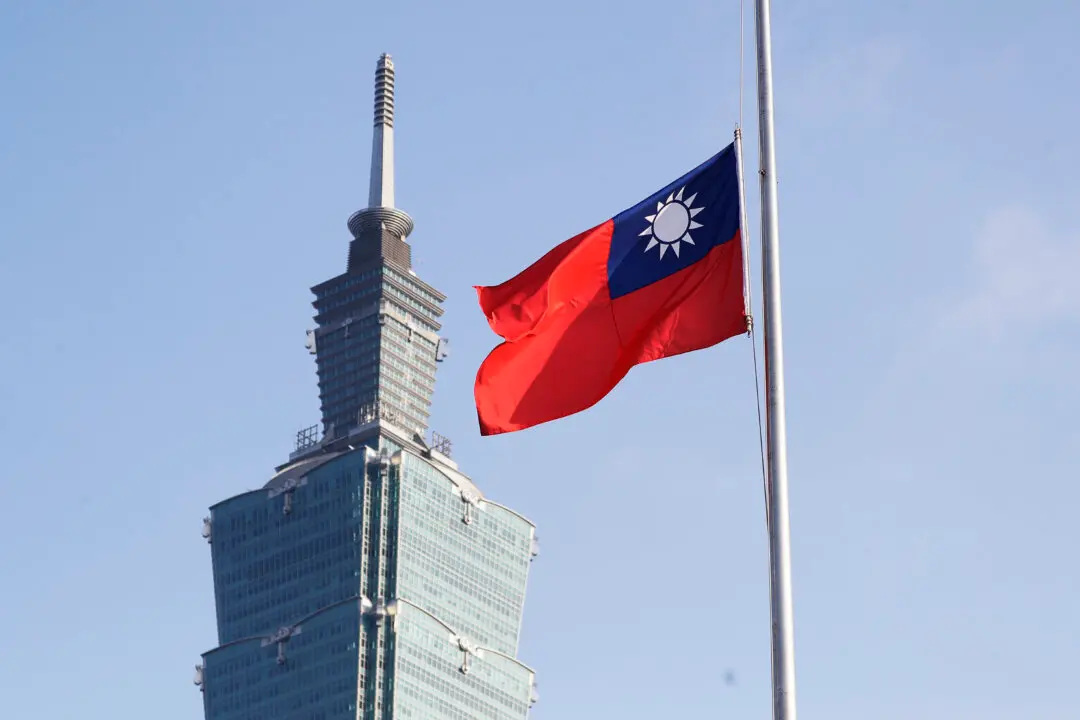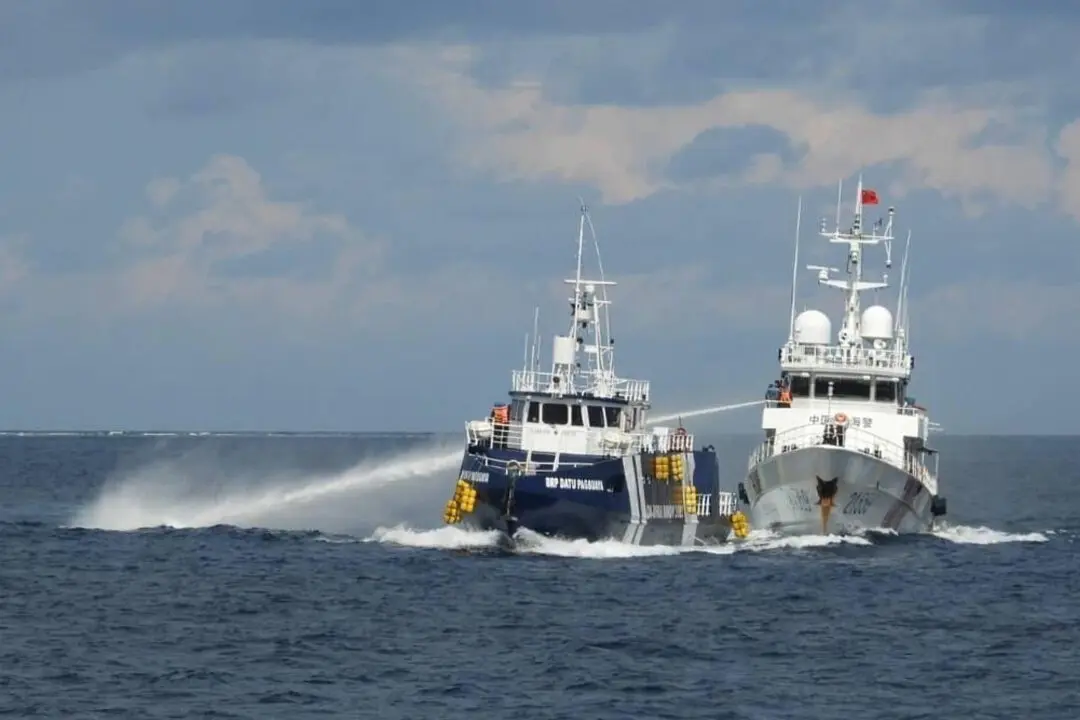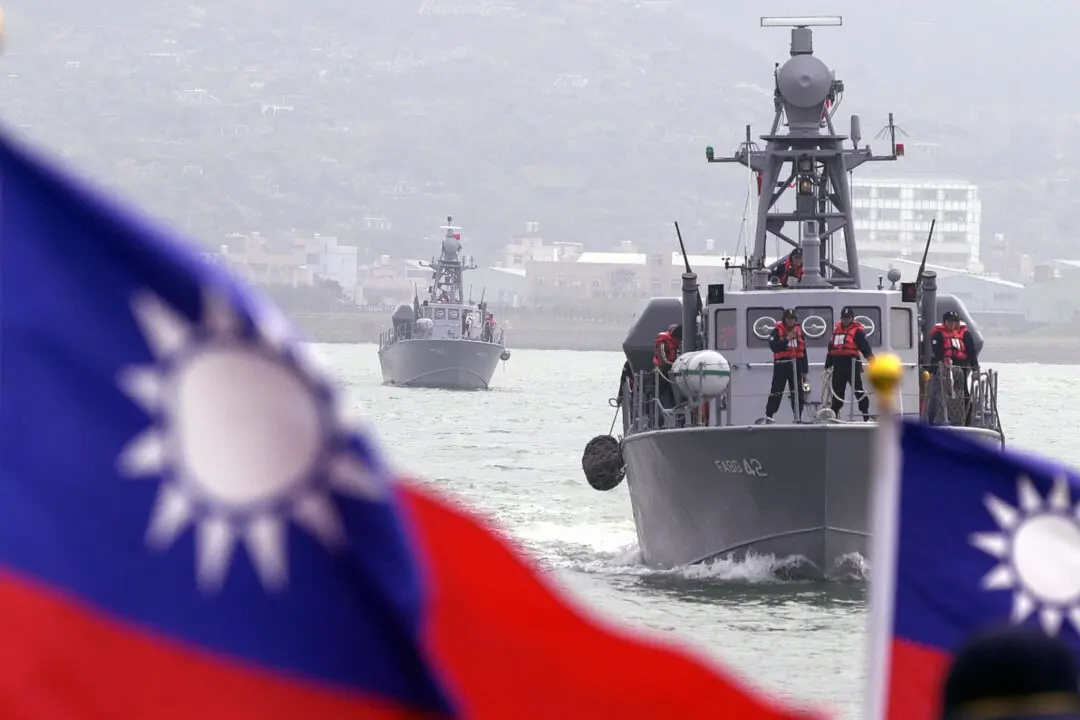China’s communist regime is drawing international criticism following an incident near a disputed South China Sea shoal that resulted in damage to a Philippine fisheries vessel.
The latest incident occurred on Aug. 25, when the Philippine vessel, operated by Manila’s Bureau of Fisheries and Aquatic Resources, was on a resupply mission from Hasa-Hasa Shoal to Escoda Shoal. According to the National Task Force for the West Philippine Sea, the Philippine vessel prematurely ended its mission because of engine failure after being rammed and shot with water cannons by Chinese Coast Guard ships.
